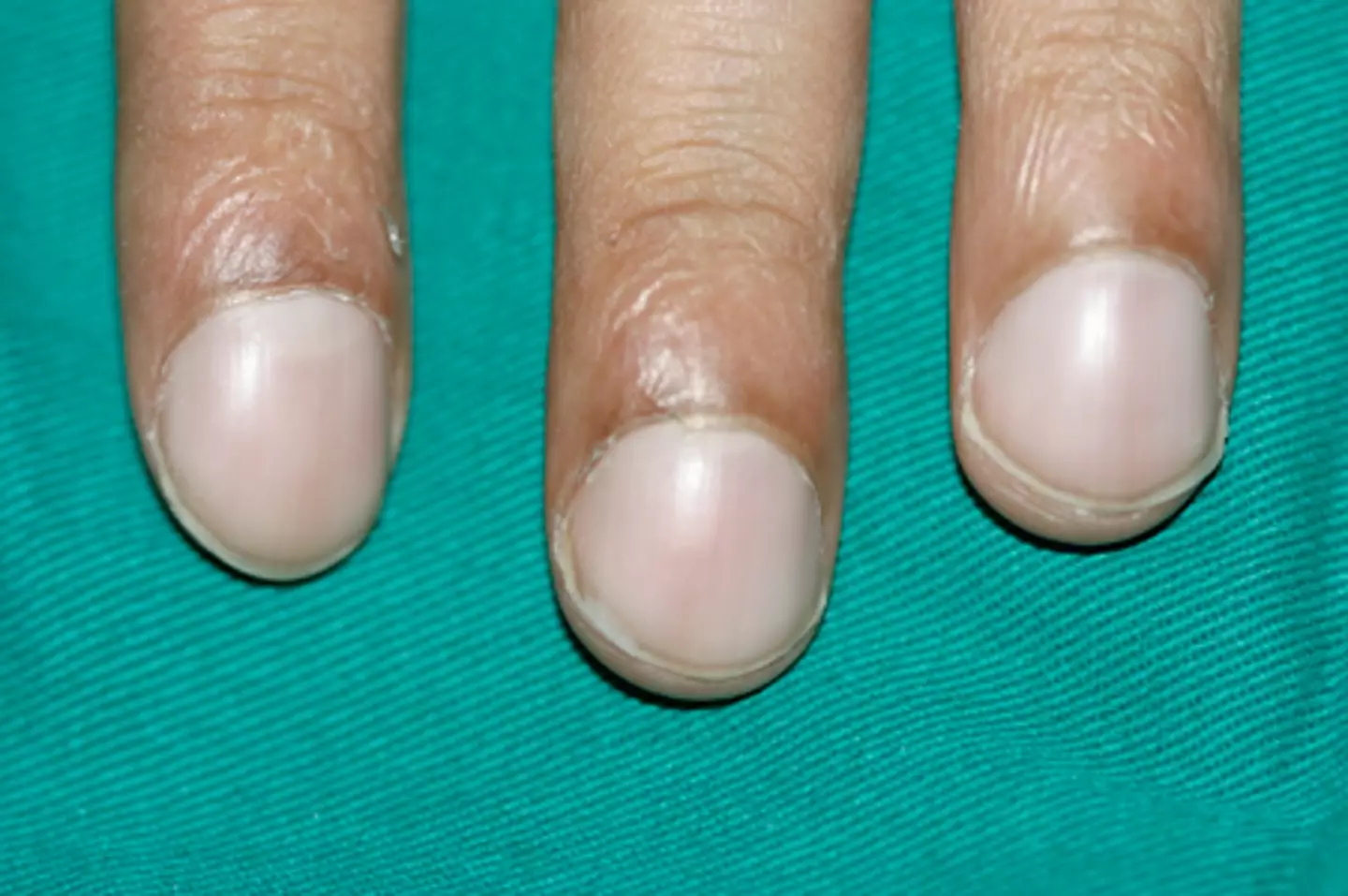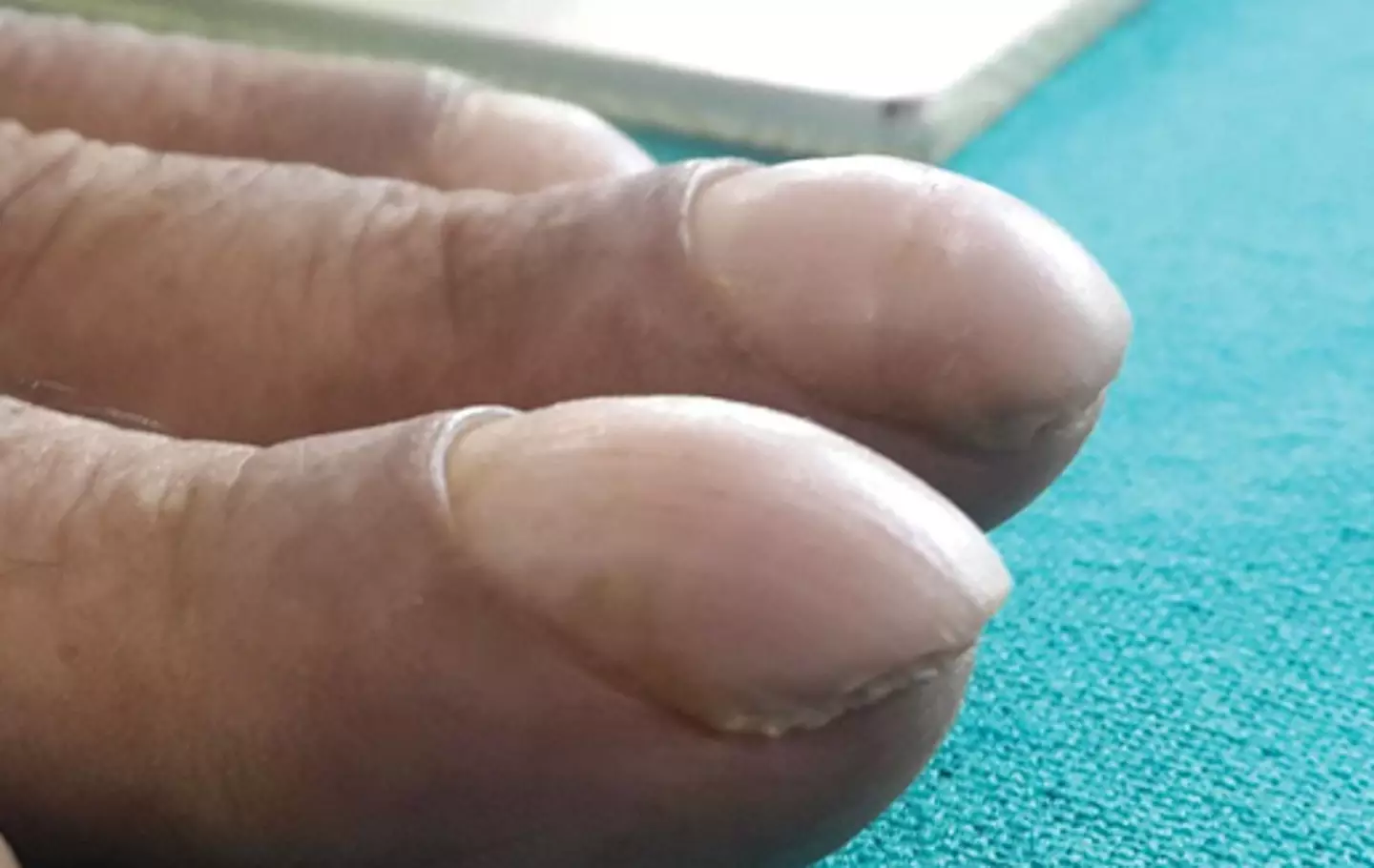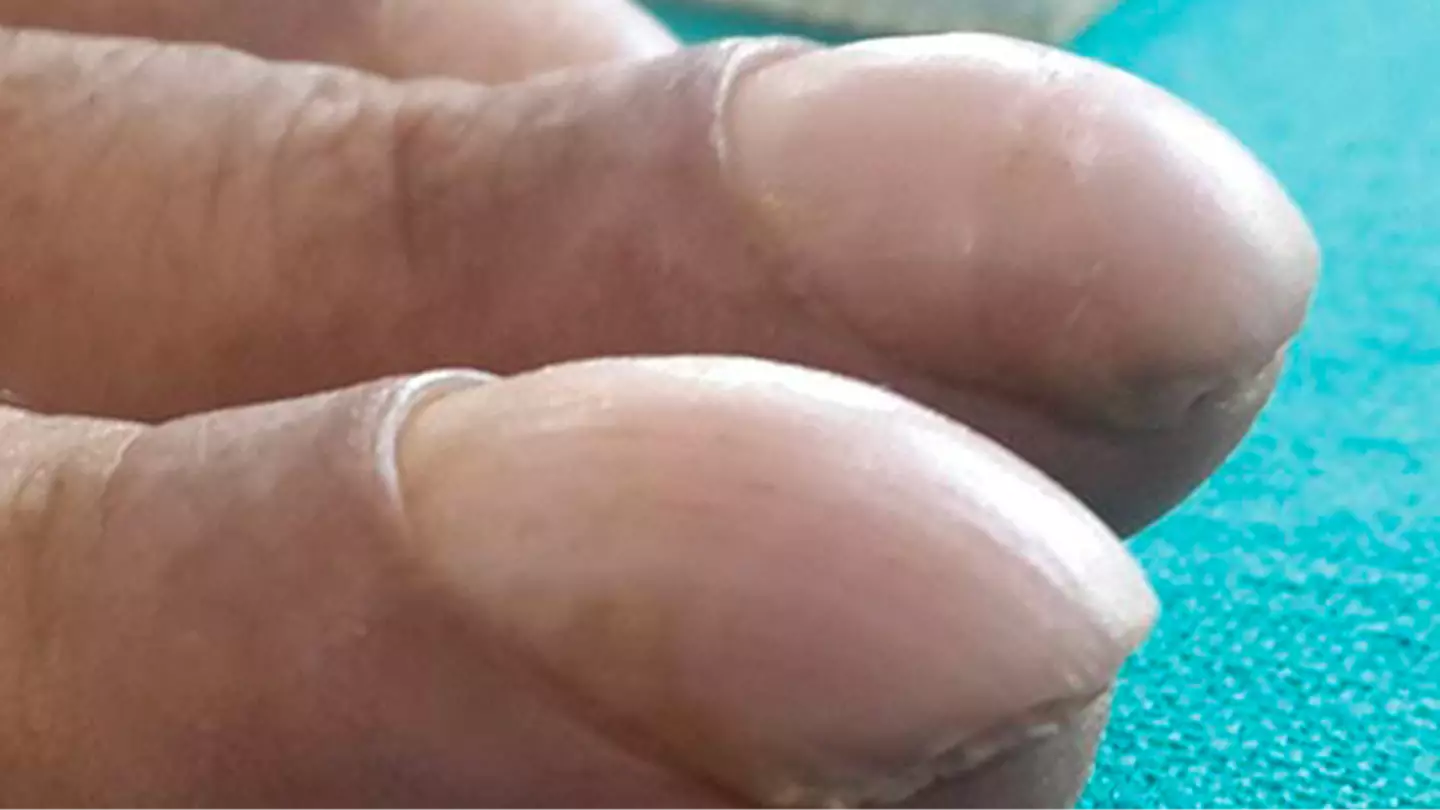The condition known as ‘clubbing’ might merely appear strange at first glance, but it can be an indicator of a severe health issue that requires prompt medical attention.
The human body is a highly intricate system, often presenting both subtle and overt hints when something is amiss.
Because of this complexity, some individuals may overlook certain symptoms, hoping they will resolve on their own; after all, a headache can sometimes be just that.
Nevertheless, ‘clubbing’ is one symptom that experts advise not to disregard.
The Cleveland Clinic describes clubbing, or nail clubbing, as a significant alteration in the appearance and structure of fingernails or toenails.
In this condition, nails might resemble an upside-down spoon, often appearing wider or swollen.
Additionally, nails may feel soft or spongy, feel warm to the touch, and appear red.
This condition might affect only a few nails or all of them, but it typically begins with changes in the thumb and forefinger and then progresses.

While this condition might simply alter the appearance or feel of the nails, it can also be a warning sign of lung cancer and other critical diseases.
The clinic notes, “Nail clubbing is most often associated with diseases of the heart and lungs, like lung cancer, lung infections, interstitial lung disease, cystic fibrosis or cardiovascular disease.”
In addition to clubbing, the formation of dark lines underneath the nails may signal an issue.
Dr. Chin Kai Huang, a podiatrist at London’s Guy’s and St Thomas’ Hospital, mentioned in a Mail Online report: “One of the most common changes we see in clinics that requires further investigation is clubbing, where the inside of the nail begins to dome.”
“This can be a sign of liver disease, lung conditions and gastrointestinal problems.”
He further pointed out that lines or striations appearing under the nail can, albeit rarely, indicate a form of melanoma.

Medical professionals recommend consulting with a healthcare provider if unusual changes such as clubbing are noticed.
A study conducted in 2012 by Dr. Malay Sarkar, an expert in lung cancer from India, found that lung cancer is a leading cause of finger clubbing, linked to nearly 90 percent of cases.
Nevertheless, it’s crucial to understand that nail clubbing affects about five to 15 percent of those diagnosed with lung cancer.

